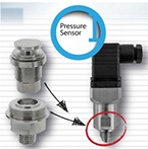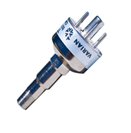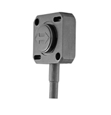Types of Sensors Used in Industrial Automation
To optimize industrial systems, enhance their security and make the operations efficient, you need to automate them. This requires the use of programmable logic controllers (PLC) that help operators to control and diagnose their systems in the case of a problem.
A sensor is an input device that provides a signal (output) with respect to a particular physical quantity (input). This post digs deeper into the PLC systems to determine the different types of sensors and how they work.
Types of Sensors Used in Automation
In industrial production, sensors have a vital role in helping to make production exceptionally automatic. The sensors make it easy for you to detect, assess, and process various transformations such as altering positions, length, height, and dislocation in industrial production/ processing sites.
The sensors are also important in the prediction and prevention of crucial proceeding in industrial procedures. The main types of sensors used in industrial automation include pressure sensors, temperature sensors, torque sensors, and MEMS sensors.
Temperature Sensors
These sensors gather info about temperatures from a targeted resource and convert it into a format that can be read and understood by another device. Here are the common sensors in this category.

Digital Temperature Sensors
These are silicon-based heat sensing ICs that help to provide accurate output via digital presentations. They are preferred for simplifying the control's design when compared to analog models that require additional work to digitize the measurements.
 Humidity and Temperature Sensors
Humidity and Temperature Sensors
These sensors are fitted with humidity and temperature sensors that provide a digital output. Their advanced measuring technology and sturdy construction make them consistent and durable.
The Applications of Temperature Sensors
The applications of temperature sensors have increased in the recent past as the need for a controlled environment to optimize productivity increases. Here are some of the common applications.
- Measuring temperature in water, soil, and air.
- Measuring complex industrial applications.
- Measuring temperatures in rough conditions.
Pressure Sensors
These are instruments that gauge pressure and convert the findings into electric signals. Here are the common sensors used in industrial applications.
 Turned parts for Pressure Sensors
Turned parts for Pressure Sensors
These sensors are commonly used in Hydraulic and industrial systems. They are also used in high-pressure industrial automation platforms used in the climate control system.
 Vacuum Sensors
Vacuum Sensors
These sensors are used when vacuum pressure falls below the atmospheric pressure levels. This means that the standard mechanical tools are hard to apply. The sensors use heated wires that have a specific electrical resistance that correlates to temperatures. When the vacuum pressure goes up, convection goes down as the temperature of the wire shoots up. The increase in electrical resistance is proportional and is assessed alongside pressure to provide an articulate evaluation of the vacuum.
The main applications of pressure sensors include:
- Measuring pressure when the level is below the standard atmospheric pressure.
- Used for weather instrumentation and machinery with pressure functionality such as aircrafts and vehicles.
- Measuring other variables like gas/fluid parameters such as altitude, flow, speed, and water level.
MEMS Sensors (Micro-electro-mechanical Systems)
These are industrial automation sensors that help to change measured mechanical signals to electrical signals.
 Acceleration Sensors
Acceleration Sensors
MEMS acceleration sensors use inertial and have a very wide range of sensing applications.
 Motion Sensors
Motion Sensors
MEMS motion sensors use advanced data processing algorithms. They are made on a special motion interaction platform that integrates multiple motion sensors using ZigBee wireless systems. The sensors process the signal by solving noise cancelation parameters such as signal smoothing, coordinate system, gravity influence partition, and position info recovery. The signal is mainly applied in the auto industry.
The main application of motion sensors include:
- The sensors are used in entertainment, sports, education, and industrial sectors to carry tasks such as monitoring nuclear reactors and triggering airbag deployment.
- Gauging gravity (static acceleration), dynamic acceleration in airplanes, shock to objects in a moving car, and washing machines.
- Detecting motion.
Torque Sensors
These sensors are mainly used together with mechanical stops to provide additional guards when mounting. Here are some of the common torque sensors.
 Rotating Torque Sensors
Rotating Torque Sensors
This is one of the common sensors used in industrial production to gauge the reaction of rotational force. The torque sensors are fitted with mechanical stops to increase surplus capacity and offer additional safety during operations.
 Torque Transducers
Torque Transducers
These sensors use strain assessment technology to address one of the challenging aspects for most dynamic and static operations. The main applications of torque transducers include:
- Measuring the speed of rotating necessities.
- Assessing inertia’s mass and mass moment.
- Gauging the highest speed of rotation.
Conclusion
The sensors discussed above have become very common in the automation industry. The intensified interest in these sensors demonstrates their unique capabilities in different fields.
